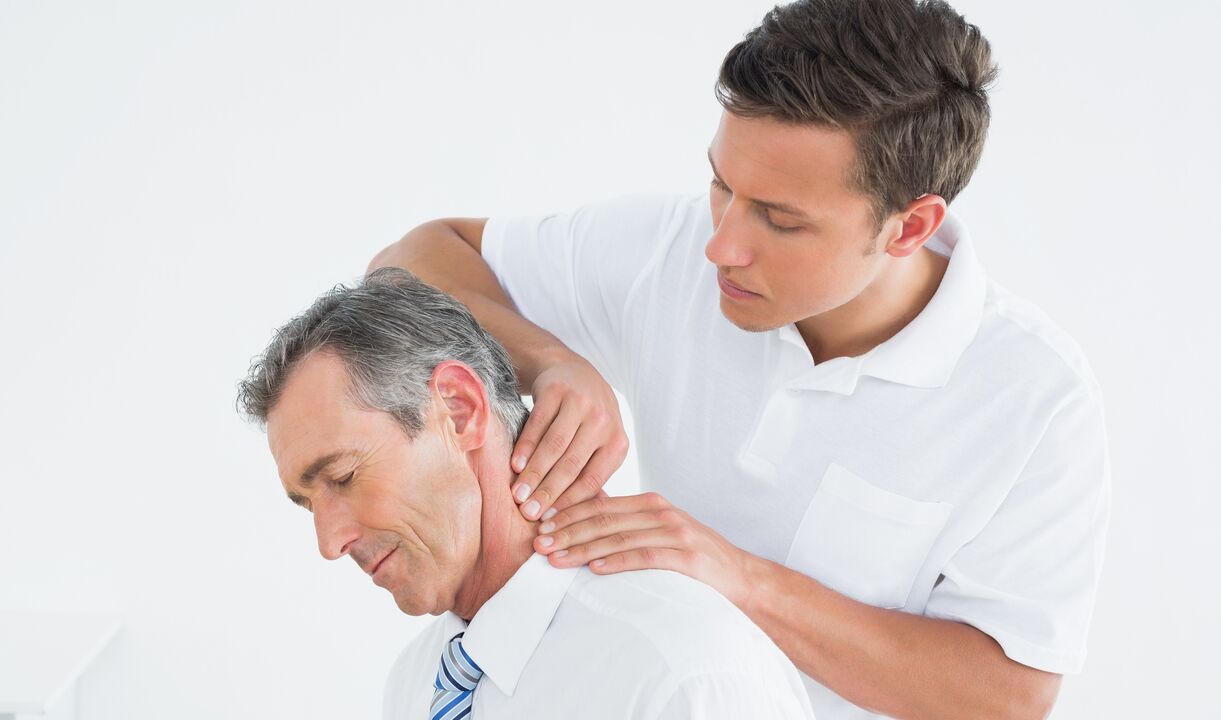Back and neck injuries, strenuous physical exertion, sedentary lifestyle, pregnancy, old age - all the causes of spinal diseases, the support of the human body. The symptoms of osteochondrosis of the neck, chest or lumbar are different, so not all subtle signs can be ignored. The sooner treatment begins, the sooner recovery will occur. If you notice the first signs of the disease in yourself, see a doctor and have an examination.
What is osteochondrosis
One of the most commonly diagnosed diseases of the spine is osteochondrosis, which shows signs in every 3rd person after 35 years. It mainly affects elderly, overweight people, former athletes or workers whose professional activities are associated with a heavy workload. From the statistics of recent years, it is clear that the disease is getting younger. Girls and guys who like a sedentary lifestyle no longer surprise doctors with complaints of back pain.
Osteochondrosis is a disease of the spine in which there are degenerative-dystrophic lesions of the intervertebral discs. If left untreated, the vertebrae themselves begin to decay, leading to disability, atrophy, and paralysis of the limbs. Such a problem can lead to spinal cord stroke, sciatica, kyphosis, protrusion. In case of first signs of the disease, consult a doctor.
Each degree of dystrophic disorder in the spine is characterized by its own symptoms and signs. There are four sections in total. In the first stage, abnormal changes occur, which are expressed in dehydration and a decrease in the height of the intervertebral disc. In the second, sagging of the vertebral muscles and ligaments is recorded, and spondylolisthesis is diagnosed (dislocation, curvature of the disc). The third stage is characterized by the appearance of prolapses and protrusions on the plates. In the last stage, deformities of the vertebrae occur, on which bone growths - osteophytes - grow.
Symptoms
The signs and symptoms of osteochondrosis depend on the stage of development. The type of disease also plays an important role. Osteochondrosis affects different parts of the spine: neck, chest, lumbar. Some of the patient's symptoms may not be related to the spine, such as heart or headache, numbness in the hands and toes. However, the patient complains that his neck hurts or stings his chest. It is very important that you seek help from the hospital. Treatment for the disease takes about 3 months, plus one year of rehabilitation.
The most common symptoms of osteochondrosis are:
- back pain between the shoulder blades;
- dizziness;
- feeling of dumplings in the throat;
- nausea;
- loss of sensation in the limbs;
- elevated temperature;
- numbness of the limbs.

Cervical osteochondrosis
Considering the symptoms according to the type of disease, problems with the cervical vertebrae are dangerous because of the proximity of the brain. Here, the blood vessels that carry blood to the head partially overlap. Symptoms of osteochondrosis of the cervical spine include:
- dizziness;
- blurring of the eyes;
- noise in the ear;
- "drifts" while walking;
- pain in the back of the head, arms, shoulders.
Chest osteochondrosis
This type of disease affects the heart, causing the patient to complain of the following symptoms:
- pain in the chest, back, shoulders;
- heart pain;
- angina;
- feeling of dumplings in the throat;
- shortness of breath;
- shortness of breath;
- numbness of the hands and feet.
Lumbar osteochondrosis
Disease affecting the lower spine leads to problems in the pelvic organs. Sexual function suffers. Symptoms of lumbar osteochondrosis include:
- pain in the coccyx, sacrum, lower back;
- cramps in the muscles of the thighs, calves, buttocks;
- shot in the legs;
- numbness of the limbs;
- poor joint mobility;
- exacerbation of diseases of the urogenital system.

Symptoms of migratory osteochondrosis
This term refers to osteochondrosis, which develops in two parts of the spine, such as the cervicothoracal type of the disease. In this case, the patient will feel painful signs that appear first in one place on the back and then in another, e. g. the place of pain shifts. In this case, the patient may be diagnosed with a violation of the cardiovascular system and may even take medication to treat the problem, which is not possible without a medical examination.
Signs of osteochondrosis
Depending on what is affected by the disease, doctors distinguish four groups of syndromes, each with its own symptoms. The syndromes of osteochondrosis are:
- static syndrome. This concept refers to a change in the shape of the spine. Violation of posture occurs: a person begins to hunch, bends, lowers one shoulder under the other. Scoliosis appears.
- neurological syndrome. The disease affects the nervous system. The person complains of tingling or numbness. Neurological symptoms turn into complications in the form of paralysis or seizures.
- vascular syndrome. Here we are talking about the compression of vessels by vertebral processes. This situation is often observed in the form of the disease of the neck. The result is a violation of blood circulation, a lack of oxygen to the brain, leading to blurring, dizziness, nausea, hearing and vision loss. In chest or lumbar osteochondrosis, chronic ischemia of the internal organs is observed.
- trophic syndrome. It is characterized by the fact that the tissues do not nourish the essential materials properly. As a result, ulcers, inflammation and other defects appear on the skin.

First signs of osteochondrosis
In the initial and final stages of the disease, the patient does not experience any discomfort. Only a doctor can identify the problem at this stage of development, such as during the diagnosis of another disease or a medical examination. The diagnostic methods are as follows:
- radiography of the spine in two projections, if necessary, radiography of a single vertebra;
- magnetic resonance imaging (determination of intervertebral disc herniation, assessment of spinal cord condition);
- discography (examination of the intervertebral disc);
- electrophysical examination (determination of the degree of damage to the nerve pathways).























